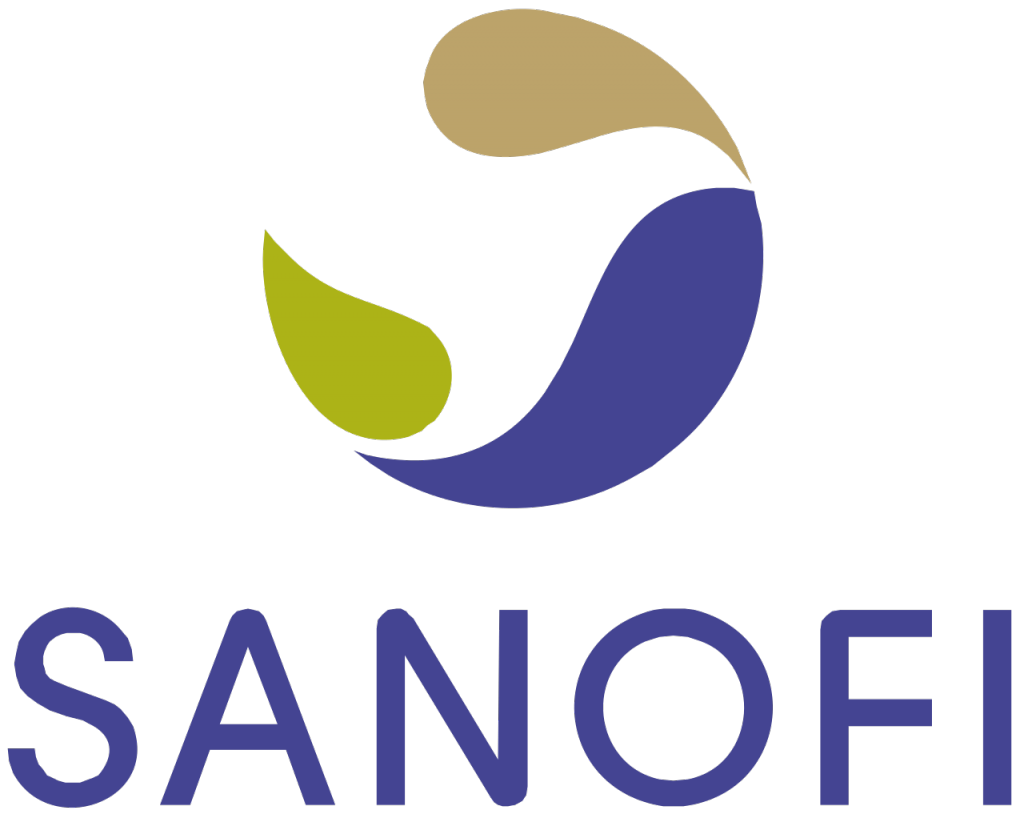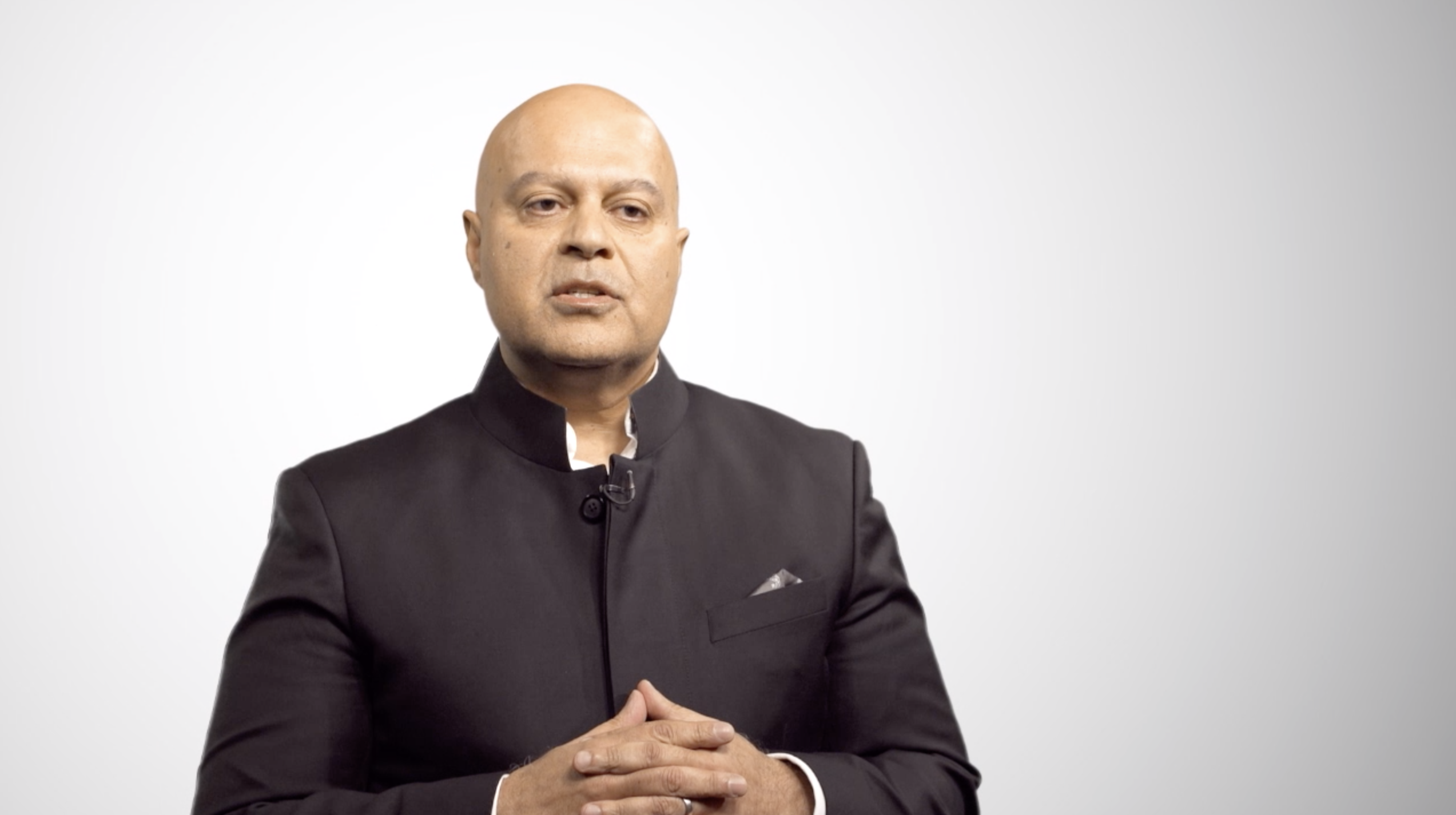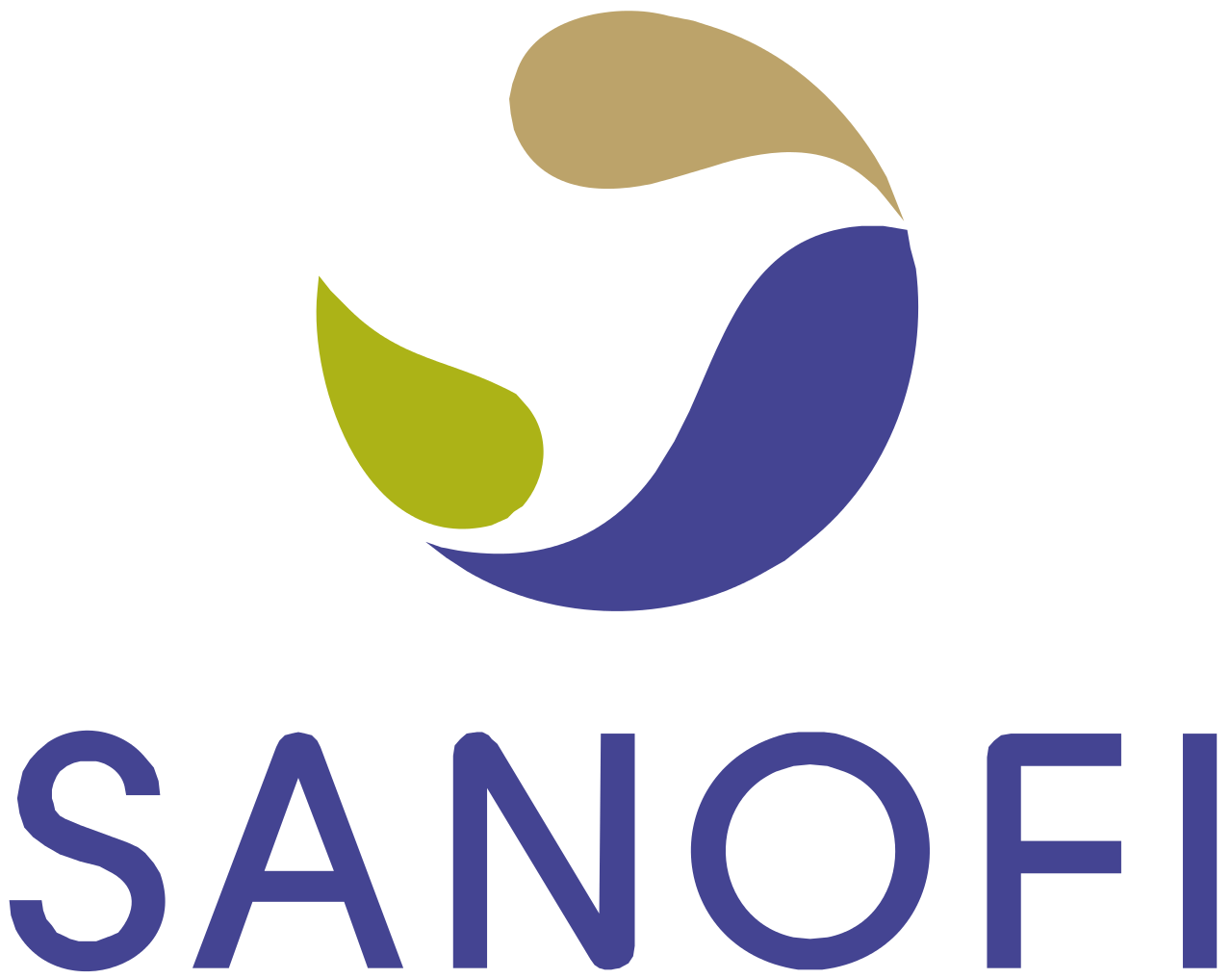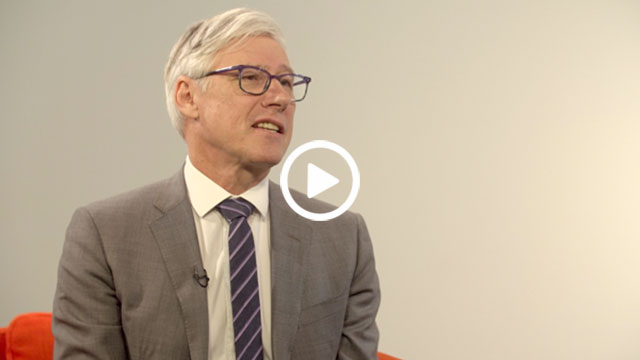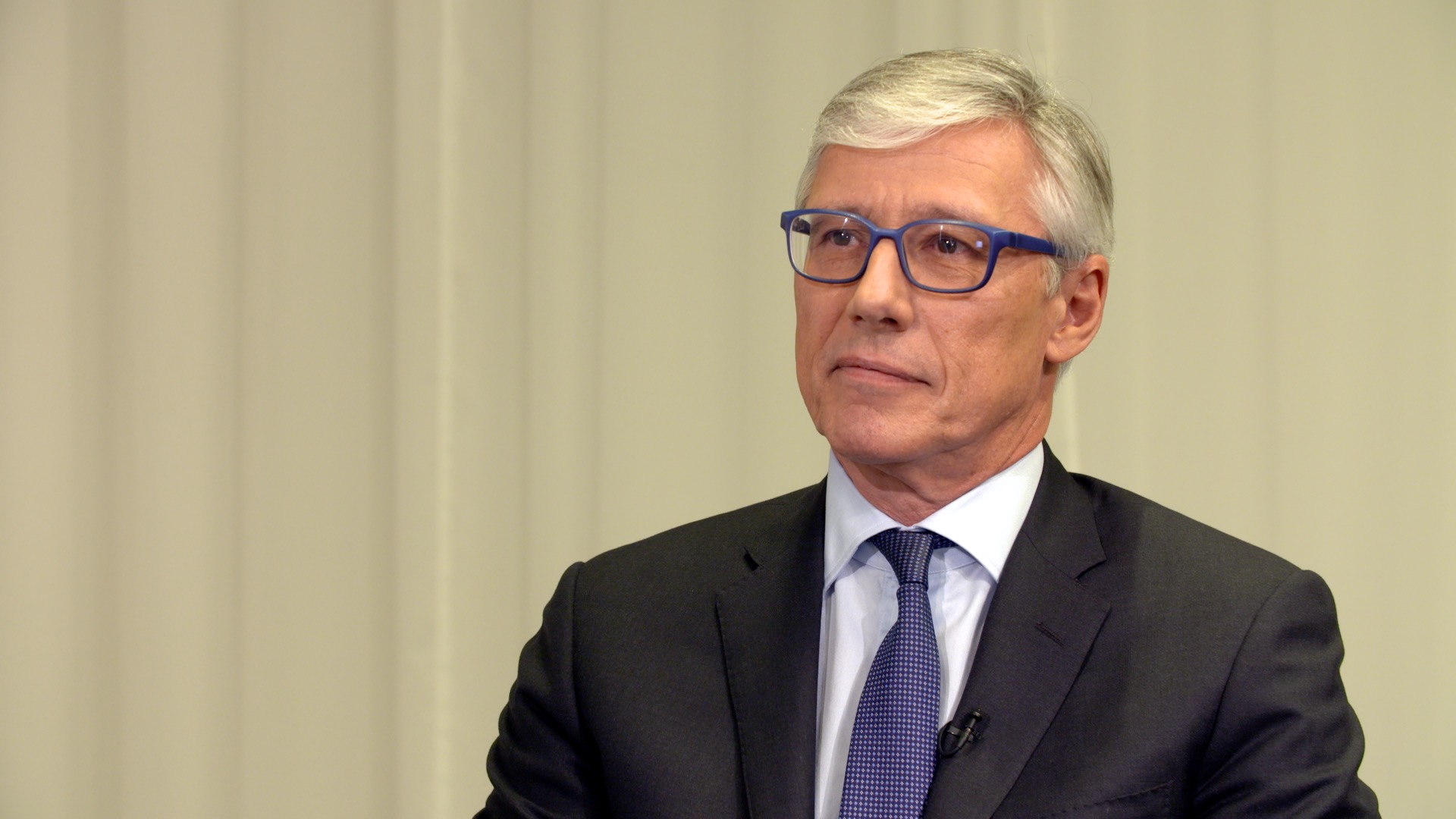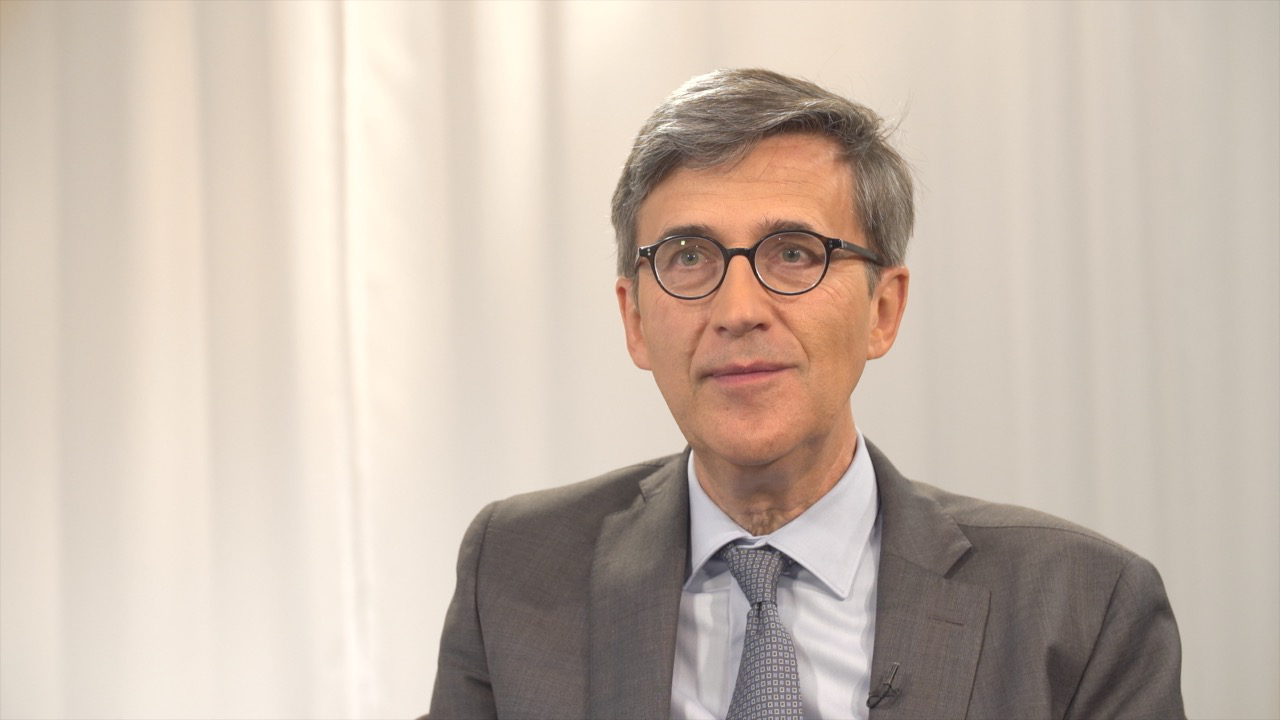EuroBusiness Media (EBM): Sanofi-aventis, one of the world’s largest diversified health care companies, reports earnings for third quarter of 2009. Chris Viehbacher, welcome. You’re the CEO of sanofi-aventis, what are your comments on the Group’s performance in the third-quarter?
Chris Viehbacher (CV): When you look at it short term, we had a very solid performance, and I think we also made a lot of good progress on our strategic plan, we’ve been able again to make a number of partnerships, acquire some companies, make progress on our transformation plans. If you look at the results, clearly, we are starting to see the anticipated genericization of Eloxatin and Plavix. But despite that, we still achieved, at constant exchange rate, 8% profit growth. That’s very robust growth from our core growth drivers: Lantus was up 20%, Plavix in the United States going into double digits, our vaccines business looking very good. So I’m very happy on the sales front, all our cost ratios are in better shape. So overall I think we’ve made tremendous progress, both on the quarterly results, and then again on transforming our business.
EBM: What was driving your top line growth in the third-quarter? Can you remind us of what you see are growth platforms for sanofi-aventis today?
CV: We have identified 5 growth platforms that are really going to carry us through the entire next 5 years. They’re clearly: vaccines, emerging markets, over-the-counter (OTC) medicines, our diabetes franchise, and new products. When you look at the third quarter, we made excellent progress on all. Obviously, a big topic for discussion everywhere, and a huge issue for our company, is the H1N1 vaccine. And the company has just been working around the clock to make sure that that vaccine gets out. We’ve been doing a lot of the work in the third-quarter, and we’ll see a lot of the sales come through in the fourth-quarter and in the first-quarter of 2010. But we also, I think, saw some very good progress on our Menactra franchise. We closed the transaction with Shantha. So good progress there. On emerging markets, growth of over 20% again. I had the opportunity recently of visiting our businesses in India, Brazil and Mexico. Very strong management, we’ve got some excellent production facilities. And the acquisitions, I think, we’ve done in those countries have really strengthened the portfolio of the company. Our OTC business, up 26%, partly driven by acquisitions, but again, I think, this is a business that has long term legs, largely because you’re not faced with patent expiries. Again, this is a business that’s also very important for our emerging markets and franchise. Multaq has been launched, we’re very satisfied with the progress that it’s making in the United States. We’re also very happy to see it approved in Europe, Canada and Switzerland. So I think that will be an important new medicine for patients, and obviously, a key growth driver for the company. And finally, Lantus, up over 20% again this quarter. We also were able to sign an agreement with a company called Wellstat. And this is very much in line with of our desire to make diabetes an entire franchise, and not just an insulin product. So we’re very happy with the growth drivers.
EBM: What are your comments on the pace of sales erosion for some of your products now facing threat from generics, such as Plavix in Europe or Eloxatin in the US. Is that a matter for concern, or is it just business-as-usual?
CV: You know, that’s the way this business works. Obviously, we have tremendous growth when we have patent cover, but inevitably patents come to their term. We have, I think, signaled this. We know that over the next two to three years we’re going to lose old friends, like Plavix and Taxotere and Eloxatin and Ambien CR. And to a great degree, I look at those as simply future cash flows. We know that they will come to an end at some point. What’s really important, though, is that we are busy transforming the business, and really pushing on those growth drivers, which offset, really, the effect of patent expiries. Last quarter, we were able to give guidance to the market and said that these growth drivers are enough -- without any further acquisitions -- these growth drivers are enough to entirely offset, both on a sales and on a profits basis, the erosion related to generics.
EBM: You’ve just recently launched Multaq in the US. Is the launch of Multaq going as well as planned? When are you going to roll it out in other countries?
CV: The United States is the first country where we’ve launched. We are comparing this, obviously, to other launches of products, and we’re doing extremely well on that. This is a specialty launch, so we are really trying to make sure that physicians understand the benefit and the safety profile of Multaq. We have a long term outcome study, called Athena, which has shown a 24% reduction in hospitalizations due to cardiovascular events. This is extremely important for patients. It’s been also a tremendously good health economics argument to make with payers. So, so far, everything that we are looking at – the market research, the reactions by insurance companies, reaction by patients – has been extremely positive, and so we’re very excited about the potential of Multaq.
EBM: It would appear that, perhaps, some of your competitors have been over-promising on their ability to deliver H1N1 flu vaccine on time and in sufficient quantity. What is your update and outlook today from Sanofi Pasteur regarding sales and production of your H1N1 vaccine?
CV: You know, every day we know more about H1N1, we know more about the virus, we know more about vaccines. We are the world’s leader in vaccines, and we clearly have taken that responsibility seriously. We have three manufacturing facilities: two in the United States, one in France. All three of those facilities are working 24 hours around the clock, 7 days a week. We are using over 600,000 eggs every day for the manufacture of H1N1 vaccine. It should be remembered that we also had to make sure that we fully met our commitments in terms of seasonal flu vaccines. So if you like, we’ve had to produce twice as much vaccine as we would normally do in this time frame. And I’m very proud of our teams and their being able to deliver. We are ahead in the United States. We have provided thus far 75% of the deliveries to the US government. We expect to deliver by the end of the year, 75 million doses. We will also commit 5 million doses to Mexico. We have a number of other commitments outside the United States, notably to Brazil. And of course, we have to remember that we have committed 100 million doses free of charge to the WHO, for those countries that can’t afford to stockpile. In France, we are also making strong progress. We have submitted a file already for an unadjuvented vaccine and we will very shortly submit the file for regulatory approval for an adjuvented vaccine. Again, production is around the clock, our teams have already been able to start providing seasonal flu. So it’s an important public health objective. We have been closely coordinating with the WHO and health authorities around the world, but it is a major issue for us, and we are really trying to respect all our commitments.
EBM: Judging from the first 9 months of the year, and given that the H1N1 vaccine sales were not really accounted for, would you care to fine-tune your yearly guidance today?
CV: In the second-quarter, we upgraded our guidance to around 10%. When you look at third-quarter results, I think we’ve maintained the very positive underlying trends that we’ve established in previous quarters. And really, we would continue to say it’s around 10%. However, we also know in the fourth-quarter that we are going to sell at least a half a billion dollars of H1N1 vaccine. That will add about 1% to our EPS growth. So we’ve updated our guidance to say around 11% this year.
EBM: How is your Transforming Program moving forward? Do you have any tangible progress to report this quarter?
CV: So we are really now moving into the implementation phase, having spent the first part of the year really thinking about what are the growth drivers of the business and how we need to orient all our teams around those growth drivers. As we now move into the execution phase, all of our teams are involved and thinking about structure, about competencies, cost structures, and how we need to respond to different customers. Obviously, our biggest area is R&D. It is the area where we’re seeing the most amount of change, and it’s probably the biggest challenge because this entire industry has been faced with a productivity issue. Are we going to be able to come up with enough new medicines? I think we made excellent progress on that. The first part of the year was really to ensure that the portfolio of projects we had in there were not just safe and efficacious, but also could meet the tests of the marketplace. That meant we’ve also put in place some very rigorous processes to make sure that anything new going into development are going to meet all of the definitions of the marketplace, and not just the scientific criteria. So now if I look at this quarter, we have actually already been able to reinforce our portfolio. The first one was through the acquisition of Fovea, an ophthalmology company, in which there are three new medicines that I think could be quite exciting for us. And Fovea will be an ophthalmology platform for us. We now have expertise within the company. There is a tremendous research team associated with that. Again, very much like our BiPar acquisition, we intend to keep Fovea more or less independent and allow them to bring along a whole new portfolio of ophthalmology medicines. We also were able to sign two partnerships. One was with Wellstat, which gives us a new first-in-class medicine for Type 2 diabetes, a new insulin sensitizer. The diabetes franchise is extremely important for us going forward. The second one was with a company called Merrimack in the Boston area. This is for an ErbB3. So we know Erb1, or HER1, is Herceptin and there's a HER2 medicine out there, or Erb2, called Tykerb. But many of the world's leading oncology experts believe that Erb3 is at the crossroads of most cancer tumors. So it's an extremely exciting new medicine and we're looking to move that into Phase II. In general, when you just look at our third-quarter, we have moved 2 medicines into Phase III, that's BSI-201 from BiPar and Otamixaban, which is a new anti-coagulant that will go into Phase III really for the acute treatment of people with heart attacks, first the non-STEMI patients. This has shown a significant survival benefit over existing standards of care. And in general, we've actually been able to move 7 new medicines into our product development portfolio. So we've moved from 52 to 59. So I think some very strong progress going on in R&D. In all our areas, whether it be in manufacturing, in commercial operations, as well as in our head office, we have completed our social plan for our head office and we will close the former Aventis headquarters at the end of this year as planned. So the whole company, if you like, is now behind this and moving forward with our program.
EBM: The ink on the Merial deal was barely dry at the time of our last interview in July, so not much could be said. But now you own 100% of Merial. Would you care to take the opportunity today to expand on the next phase of the Merial deal?
CV: We've always said that animal health is an exciting area. This is, again, very much in line with our strategy of focusing on businesses that have long term and sustainable growth profiles. Now, Merial is in itself an exciting business because it actually looks a little bit more like a consumer business. There are two major brands, Frontline and Heartgard in there. And they will actually have the same durability of performance that you might expect from an OTC brand. However what's also exciting is that, as we acquired Merial, we also negotiated with Merck to have the option to merge with their other animal health business that they acquired with Schering-Plough which is called Intervet. And Intervet is more focused on production animals. Now the next step is clearly to wait until Merck and Schering-Plough have finalized their merger, and that's expected to happen sometime in the fourth-quarter. Once that happens, then we have roughly a 100 days in which to discuss with Merck to make sure they would still like to do this merger and to do due diligence on Intervet. And then we will come to a decision with Merck as to the benefit of actually bringing these two together. Both Dick Clark and I are very interested in animal health business. If we could bring these two businesses together, we would create the world leader, and I think that would be an exciting opportunity.
EBM: Do you have anything to report today regarding some of your recent partnerships and acquisitions, whether they be in areas such as oncology or diabetes? Why are you interested in ocular diseases and shall we expect more bolt-on transactions in OTC?
CV: So again, I always come back to our 5 growth platforms and we want to push those businesses organically. But where we can find bolt-on acquisitions we can accelerate the growth of those. Now if you think about some of them that we have done -- if you look at Fovea, for example – ophthalmology, I think, is a core area for us going forward. You've got an aging population and actually even when you look at the emerging markets, this is a priority area as people grow older and we're seeing a new revolution in science. Up until now the ophthalmology market has been really dominated by treatments for the surface of the eye, glaucoma if you like. Now we're seeing new conditions, like age related macular degeneration, come along and these are treatments within inside the eye. So we want to be part of that new research revolution but there's also a huge unmet need. We've announced today that we've acquired Oenobiol. This is a healthcare business that is associated with wellbeing, very much in line with the acquisition we did last year of Symbion in Australia, of building businesses for wellbeing. There is a significant market there. This very much fits with the businesses we have, reinforces our relationship with the pharmacist. If I look at the Shantha acquisition, this was also very clearly driving our vaccines business and our emerging markets business. This quarter we also acquired an insulin factory in Russia. Russia is a strong and growing market, a brand new facility here. This gives an opportunity to really anchor our presence in a very strategic market for us going forward. So as we review our business we are looking locally as well globally at those opportunities where we can bolt-on to those growth platforms. So yes, we're becoming a little bit more diversified but very much still focused on our core competencies and those businesses where we have strong customer relationships.
EBM: The financial community has noted your efforts to provide a long term perspective for sanofi-aventis. Can you remind us of your ambition for 2013 and of your strategy to get to where you want to be by that date?
CV: When most people used to think about sanofi-aventis, they thought about the patent expiries of Plavix, of Taxotere… And I think we noticed that many people weren't really paying attention to the underlying fundamentals of sanofi-aventis. And we actually had an 'Aha' when we did our emerging markets seminar and we announced that we would likely double that business over the next 5 years. When we saw the very positive reaction to that statement, we realized that people weren't really fully evaluating the potential of our 5 growth platforms because if you look at vaccines, you look at our OTCs or our emerging markets, our diabetes franchise and the new markets, all of those are businesses which can double over 5 years, just on the growth trajectories that they're already on. No hockey sticks, just continuing those businesses, and without any further bolt-on acquisitions. And when you do the math you realize that in 2013, and I'm spending most of my time thinking about 2013, the year after the so called patent cliff, we realized the patent cliff goes away. We are able to achieve the same level of sales in 2013 as in 2008. No, we haven't done it yet. There's going to be an awful lot of hard work to actually get there. But those businesses have clearly the potential to do that and we're demonstrating, I think, every quarter that there’s that potential. Now, clearly, when you have these big blockbusters there is a tremendous leverage effect on the bottom line. And so even if we can get to the same level of sales in 2013, if we did nothing else we wouldn't get to the same level of profits. So that's why we announced a program to take €2 billion out of our cost base between now and 2013. When we do that, we achieve actually the same level of profit also in 2013 as in 2008. Now I'd like to say right up here Adrian, my objective is not to spend the next 4 years getting back to where we started from. This is, if you like, a floor that we want to put in under the company. Our objective is now to take our cash flow -- and we generated over €6 billion of cash flow in the third-quarter -- to invest that in smart bolt-on acquisitions and look for new opportunities also out there to reinforce our R&D pipeline and grow off that base. But at least that puts a floor under a business that most people hadn't appreciated. And I think by putting that 2013 number out there we're getting a lot more people looking at really what is in sanofi-aventis beyond the big blockbusters. And I think the share price improvement that we've seen this year reflects that appreciation of the very solid fundamentals of the company.
EBM: Chris Viehbacher, CEO of sanofi-aventis, thank you very much indeed.
CV: Thank you Adrian.

